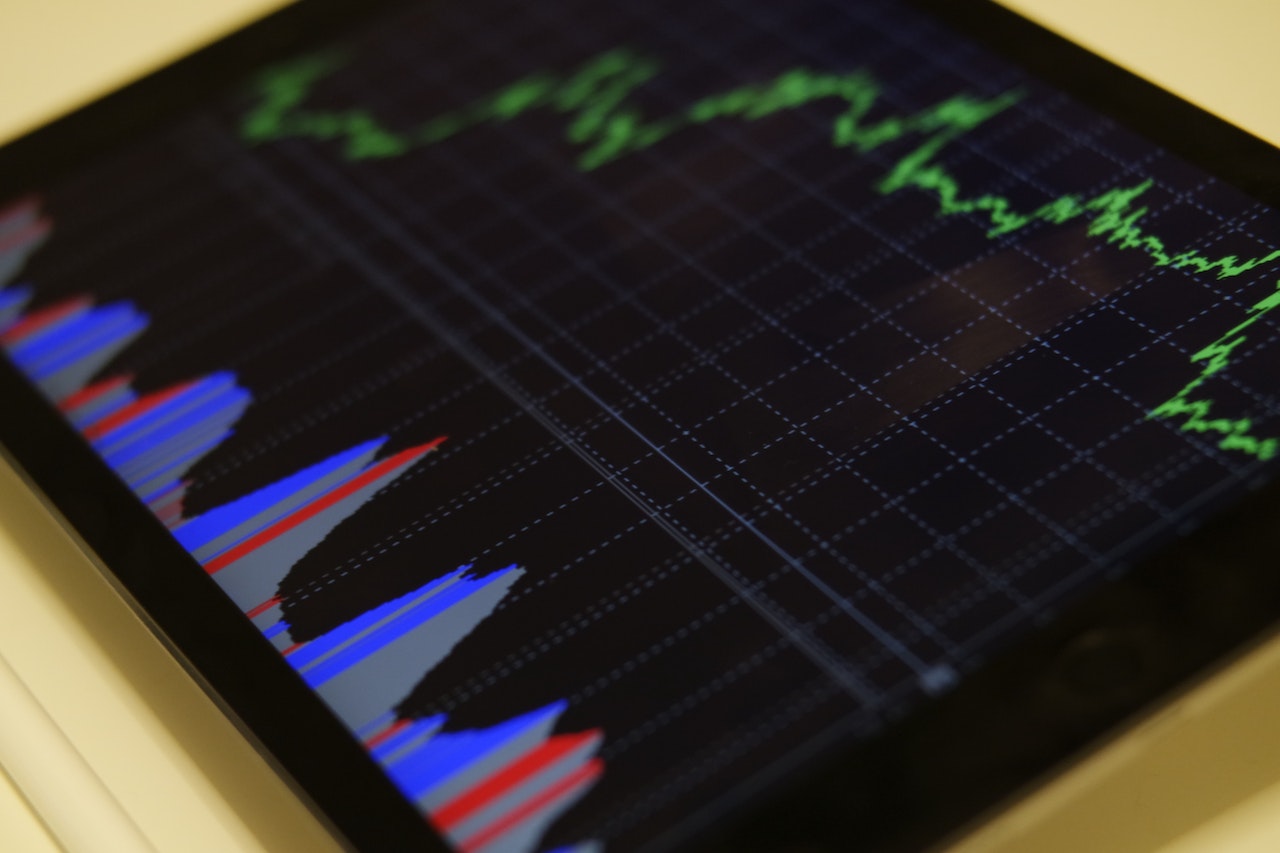What is Volatility?
Volatility is a statistical measure that represents the tendency of a market or a security's price to rise or fall sharply within a short period. It's volatility to the 'choppiness' of the sea – sometimes calm, sometimes turbulent. In financial terms, high volatility means that a security's value can change dramatically in a short period, indicating a higher degree of risk. Conversely, low volatility indicates less dramatic changes and a more stable investment.
Volatile currency pairs can be a great way to make money in forex. However, they are also very difficult to trade because of their volatility. These currency pairs often have huge or dramatic price movements that allow traders to make a significant profit but they may also magnify losses.
In most cases, volatile currency pairs will also be impacted by similar factors as non-volatile pairs. Such common factors affecting these currency pairs include the value of imports & exports, interest rates, and geopolitical news among other factors. The major difference is that these currency pairs offer less liquidity to traders as many people fear the risks that they pose.
Trading a volatile currency pair may prove difficult, especially to new forex traders due to the high risk and low liquidity that they pose. That said, having a well-thought-out trading strategy and risk management plan can make you trade these pairs with ease. This article explains what exactly makes a currency pair volatile and how you can use this knowledge to your advantage when choosing the currency pair you want to trade. (Check out: FXPro Forex Trading Services Full Review)
What is a volatile currency pair?
A volatile currency pair is one whose value moves up and down more than usual. Currency pairs that have high liquidity will often have a lower level of volatility. But how do you explain this? Well, if a currency pair has high demand or even supply then it will be much more difficult for its price to shift. This will then lead to lower levels of volatility.
On the other hand, currency pairs with low supply and low demand will see dramatic shifts in prices when a trader buys a significant amount of the pair. Currency pairs that are less traded often show these characteristics while popular currency pairs such as USD/JPY are less volatile.
Another probable reason for high volatility is major economic news or announcements that cause a shift in the forex markets. Traders are always on the watch out for major economic news that helps them know whether to buy or sell a currency pair. It is, however, worth noting that even major currency pairs can easily be swayed by these announcements.
Should you trade a high-volatility currency pair?
Currency pairs with high volatility present a unique risk-reward scenario. These pairs are characterized by significant price action, making them both exciting and challenging to trade. Their movements are often more pronounced than other currencies due to their volatile and unpredictable nature.
To effectively trade these assets, you need not only experience in trading them but also a deep understanding of how they respond to various economic and market conditions, including volatility and liquidity levels.
There's a common temptation to gravitate towards more volatile currency pairs because they promise larger price movements and potentially higher profits compared to less volatile pairs. However, it's important to be aware of the risks involved. These pairs often have lower demand and consequently, reduced liquidity, which can add to the trading challenges.
How To Measure Volatility in The Financial Markets
Volatility is measured by how much it changes over a certain period, usually one month or less. For example, if you were trading currencies with EUR/USD (euros), then your volatility index would be very high because the value of each unit of the currency fluctuates wildly.
The most common measure of volatility is called VIX (VIX Index), which measures how much investors expect stocks to fall during periods of rising interest rates—and therefore increase their risk appetite for riskier investments such as futures contracts or options on stocks or indexes like Dow Jones Industrial Average DJIA-30).
The VIX Index is also a measure of expected volatility in the U.S. stock market. It is also sometimes called the "fear index" because it tends to rise when there are worries about the economy or panic selling in the market. The VIX Index is based on S&P 500 options prices, which can be used as a proxy for investor sentiment and expectations of future volatility in the market.
The VIX Index itself measures implied volatility over 30 days using the bid/ask quotes for at-the-money options on S&P 500 stocks. This data is then recombined into one value representing current market expectations for near-term stock price fluctuations, based on the historical variation.
Which are the Most Volatile Forex Pairs (those that move the most)?
Volatility in forex pairs isn't constant and can change based on various factors. However, certain pairs have a history of being more volatile than others. Let's delve into some of these pairs to understand their dynamics better.
AUD/JPY Dynamics
The Australian Dollar (AUD) and Japanese Yen (JPY) are popular among investors for hedging and speculating. This pair is highly reactive to news about Australia’s economy and global central bank interest rates. The key to its volatility lies in the contrasting nature of the two economies. Australia’s economy is commodity-driven, primarily relying on exports like minerals and metals. In contrast, Japan’s economy is seen as a safe haven, maintaining low-interest rates for decades. This disparity causes notable price shifts in the AUD/JPY pair, especially in response to global economic health.
NZD/JPY Volatility
Another pair known for its volatility is the New Zealand Dollar (NZD) paired with the Japanese Yen (JPY). The NZD/JPY is attractive to traders due to its lower trading volume and potential for high profits. New Zealand’s economy is largely agricultural, so fluctuations in agricultural product prices significantly impact the NZD. This, combined with Japan’s economic status, leads to considerable movements in the NZD/JPY pair.
AUD/USD Fluctuations
The AUD/USD pair also ranks high in volatility. With substantial daily trading volume, it offers a high-risk, high-reward scenario. This pair can be particularly risky due to its volatility, making day trading a preferred strategy for those seeking to capitalize on the frequent price fluctuations.
CAD/JPY Characteristics
The Canadian Dollar (CAD) versus the Japanese Yen (JPY) is another volatile pairing. The CAD is closely linked to Canada's commodity-based economy, heavily influenced by global oil prices. As Japan is a significant oil importer, changes in oil prices notably affect the CAD/JPY pair, as Japan needs to convert Yen to Canadian dollars for oil purchases, impacting the pair's value.
GBP/AUD Correlations
The British Pound (GBP) and Australian Dollar (AUD) pair, GBP/AUD, has shown a correlation, partly due to both countries being part of the Commonwealth. The AUD's value is closely tied to Australia's export market. External factors like trade wars can impact Australian exports, influencing the value of the AUD and, consequently, the GBP/AUD pair.
USD/TRY Instability
Lastly, the pairing of the US Dollar (USD) and Turkish Lira (TRY) is known for its volatility, primarily due to Turkey's political turmoil since the 2016 coup attempt. The Turkish Lira has faced instability under President Erdogan's leadership. The future volatility of USD/TRY is closely linked to Turkey’s political landscape and the economic reforms that the next leadership might implement.
Tips on How to Trade Volatile Currency Pairs in Forex
Trading volatile currency pairs is not the same as trading other popular pairs such as the GBP/USD. You need to come up with a new trading strategy that will not only consider the liquidity of the pairs you are trading but also the risk that you may incur. Here are a couple of trading tips that you can use when trading volatile currency pairs.
- Use a stop loss to limit losses- One of the main reasons for using a stop loss is to avoid making any more losses than you would otherwise incur. Many traders do not like the idea of using stop losses as they think they can go back to making profits even when they are on the verge of making losses. But a stop loss will prevent you from losing all your capital.
- Use a trailing stop to lock in profits- A trailing stop is ultimately different from the take-profit order that most traders use to lock in profits. With a trailing stop, the take profit continues moving forward if the market goes up and is favorable until the market starts declining. Once the market starts declining, the stop loss order is raised to the trailing stop prices and the order is completed.
- Set your maximum daily risk- Another simple way to trade volatile currency pairs is by setting your maximum daily risk by using the following formula:
(1 + 10% of the current price) x 100 / stop loss percentage = maximum daily long position risk/maximum daily short position risk.
For example, if you are trying to buy at $10 per share and have set your target as $12 per share, then you should set your trailing stop loss so that if it reaches 12 but not 13 or 13 but not 14 before closing on Friday evening after the market has closed for Friday trading session then you'd automatically exit all positions except for those held overnight with no further input required from either party involved; i.e., this is known as auto-exit functionality within most forex brokers who offer these types of services today including Fidelity Investments which runs online platforms like Personal Capital where users can manage their portfolios at no cost whatsoever.
What to consider before trading volatile currency pairs in forex?
Before you start trading volatile currency pairs, there are a few things to consider.
- The risk-reward ratio. You need to decide how much risk you're willing to take on and how much reward you'll get from the trade. If it's too high, then don't do it. You'll be better off investing in safer instruments like stocks or bonds instead of trading currencies that tend to move rapidly and unpredictably over periods of days or weeks at best or even months.
- The time horizon. Volatile currency pairs can be used as short-term trading opportunities when combined with other strategies. These include trend following (trading only in one direction) and breakout trading (which attempts to identify where prices will break out). This allows traders with smaller account sizes who want quick profits without taking too many risks during uncertain times while still having enough capital left over after each successful trade so they can make more trades later down the road if needed.
- The liquidity of the currency pair. Liquidity refers to how easy it is to get into or out of a position quickly without affecting the price. If you're trading with a small account, it may be better to trade less liquid currencies where prices don’t move as much when large amounts of money enter or exit the market (this is called a lack of correlation).
Final Thoughts: Most Volatile Currency Pairs in Forex Trading
Trading volatile currency pairs in Forex isn't drastically different from dealing with more popular pairs like USD/JPY. The list of highly volatile pairs is extensive, and if you aim to profit from them, certain considerations are essential.
Firstly, identify the currencies likely to exhibit significant volatility in the near future. You can achieve this by analyzing historical data or utilizing proven indicators that forecast price fluctuations.
Once you've pinpointed a promising pair, it's time to devise a trading strategy. Your approach should balance short-term and long-term trends, allowing you to decide the level of risk you're comfortable with for this particular pair.
Pay close attention to emerging patterns in market movements. If signs indicate that a currency might experience unusual volatility in the coming days, it could be an opportunity to embrace a higher risk level. By doing so, you position yourself to capitalize on these movements when they materialize.
For more Top Brokers make sure you check out our XM Forex Broker review and our in-depth Review of IC Markets Services.

 RoboForex
RoboForex Exness
Exness FxPro
FxPro Alfa-Forex
Alfa-Forex Libertex
Libertex FxGlory
FxGlory XM
XM IC Markets
IC Markets Forex.com
Forex.com AXITrader
AXITrader
